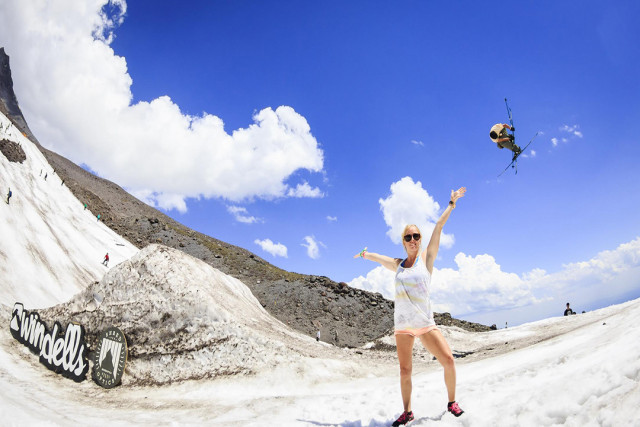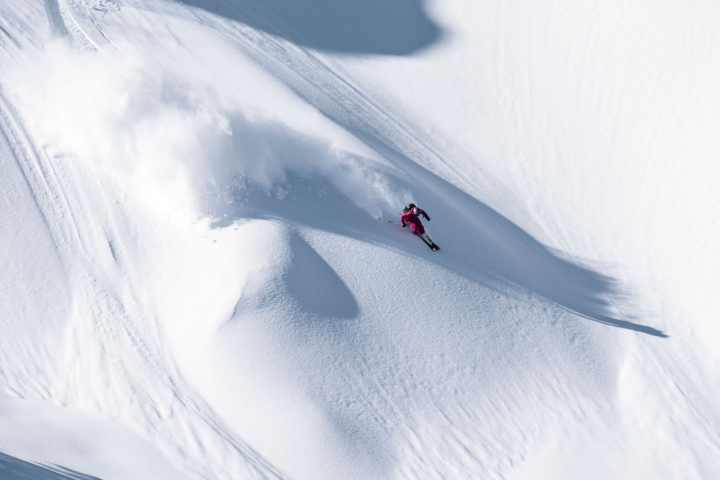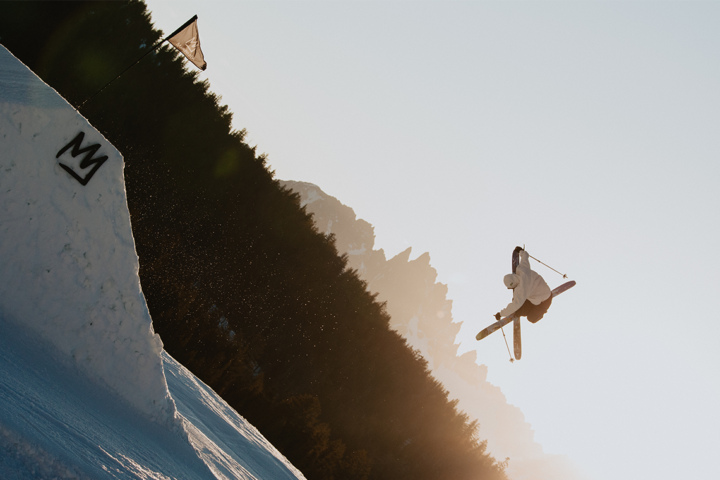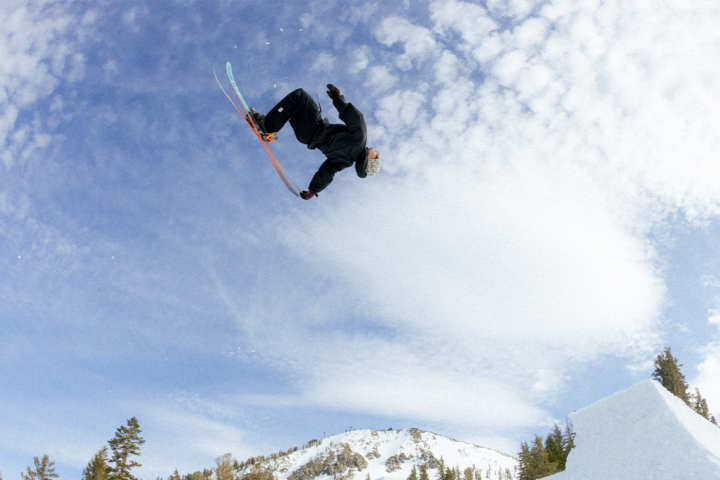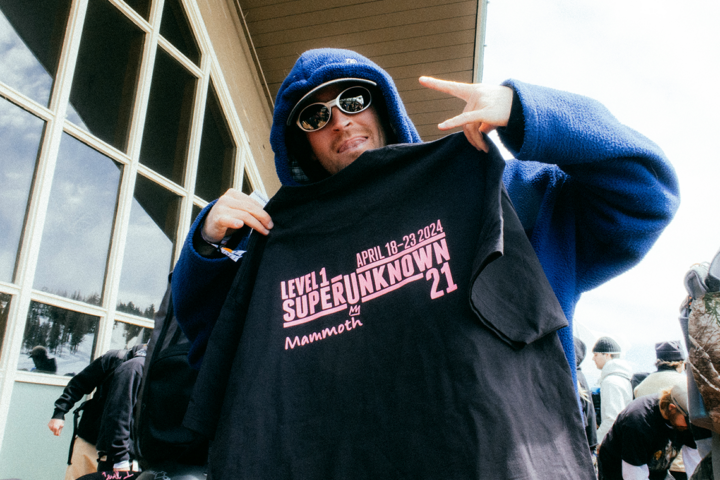On April 11, 2015, Jamie Crane-Mauzy suffered a traumatic brain injury while competing in the AFP World Championships slopestyle finals at Whistler Blackcomb. Hospitalized in Vancouver, Crane-Mauzy spent five days in a coma. She then spent three days in a medically induced coma, at which point she was transferred to the Intermountain Medical Center ICU in Salt Lake City. On April 25 she was moved off the so-called “life or death list” and was transferred to a trauma specific 24-hour care floor. She improved, and on April 30 she was moved to an in-patient rehabilitation floor and after intensive training she was released home on May 15.
Recognized as a “dual-threat” on the competitive freeskiing circuit—meaning she contends in both slopestyle and halfpipe disciplines—Jamie is now at home in Park City doing better than anyone could have expected. She has completed the rehab requirements of a “normal” patient, but because of her professional athlete status, she is working that much harder to return to not only skiing, but competition as well. We checked in with Jamie to see how she’s doing and what her plans for the future are.
First and foremost, how are you feeling?
I am feeling great. I’m improving, so every day feels better. When I was in the hospital I could not move my right arm because of a brain stem injury on my right side. At the beginning the entire right side of my body was paralyzed, but now it all moves and it all feels normal.
What were your initial fears and emotions when you learned of your paralysis?
I was conscious of my right arm not working as well as it should have, but I still had strong amnesia and was not totally conscious enough to be that fearful. I found the whole thing kind of annoying, actually, because my arm wouldn’t work like I wanted it to. It was much easier to do things with my left arm so it was frustrating that [the doctors] always wanted me to use my right arm. Once my hand got to about 50% function I thought everything was normal, but it was challenging to continue working on [rehab] because it wasn’t as [speedy of a recovery] as I thought it would be. Thankfully, my mom was insistent and continued to make me do exercises all the time at home like putting coins in to a piggy bank, twisting caps and tops on jars and cutting food.
What other challenges have you faced during your recovery?
By far the biggest challenge was the bleeding in my right brain stem that caused the temporary paralysis. They put stimulators on my arm to reconnect the pathway in my brain. For weeks, [as I mentioned], I had to work really hard and focus on using my right arm for everything. Now, the challenge is fine tuning and getting my cognitive skills totally back on track. Everything is in my brain, I just need to get the pathways open again.
For example, I had trouble remembering my friends’ names. One of my friends came to see me in the hospital and I didn’t even notice that I called her the wrong name about 20 times.
You’re rehabbing and training non-stop. What sorts of exercises seem to be the most helpful to you?
There are three different formal therapies: physical, occupational and speech. All three are totally connected. I absolutely love all the physical therapy. The therapists have come up with really unique and challenging tasks for me like standing on a wobble board, doing squats, juggling and doing mental math problems all at once. For occupational therapy, I had to get my hand-eye coordination up to speed and now I’m able to drive a car. The first time I had to drive on the highway again was during a torrential downpour in a narrow canyon. This was really a challenge, but my therapist said I did really great with all the stress and difficulty.
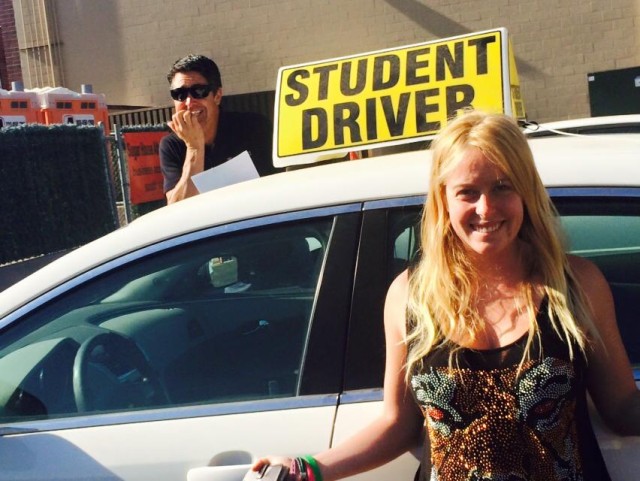
Speech therapy actually includes swallow and cognitive therapy as well. I didn’t have many speech issues, but swallowing was a real challenge. It turns out that swallowing regular thin liquids is much harder than thick liquids. I was told it could take months before I could swallow regularly, but it only took me about three weeks. The exercises are really hard to do. For cognitive therapy, I do math, complete writing assignments and work on brain teasers. I also play games like Trivial Pursuit. The most fun things are anything that is physical like hiking, hanging outdoors or yoga. The most beneficial is stuff like math and brain stimulating activities. Anything that challenges my brain is beneficial.
Just yesterday, I got to bring my skateboard in and be put in the harness that most patients use when learning how to walk. With the harness there was no way for me to fall, so I got to get back on my board and ride around. I was so stoked. I could not stop smiling.

